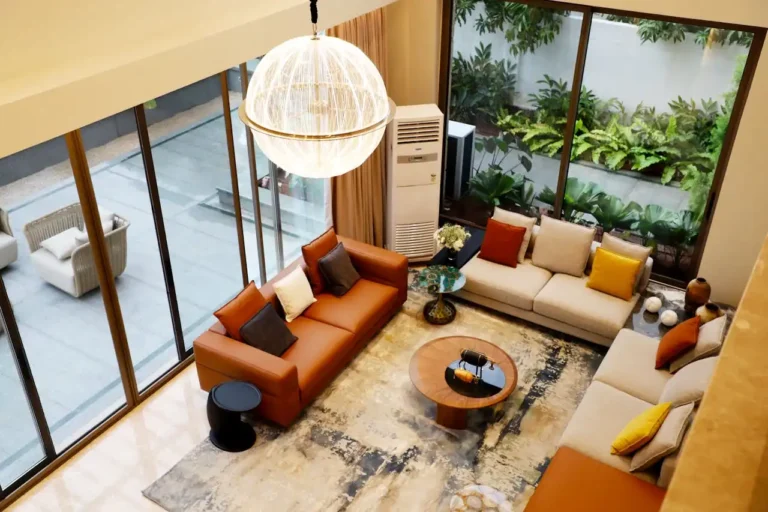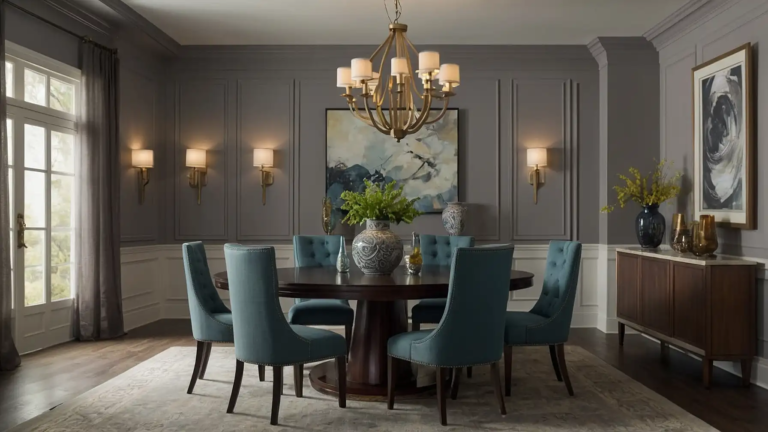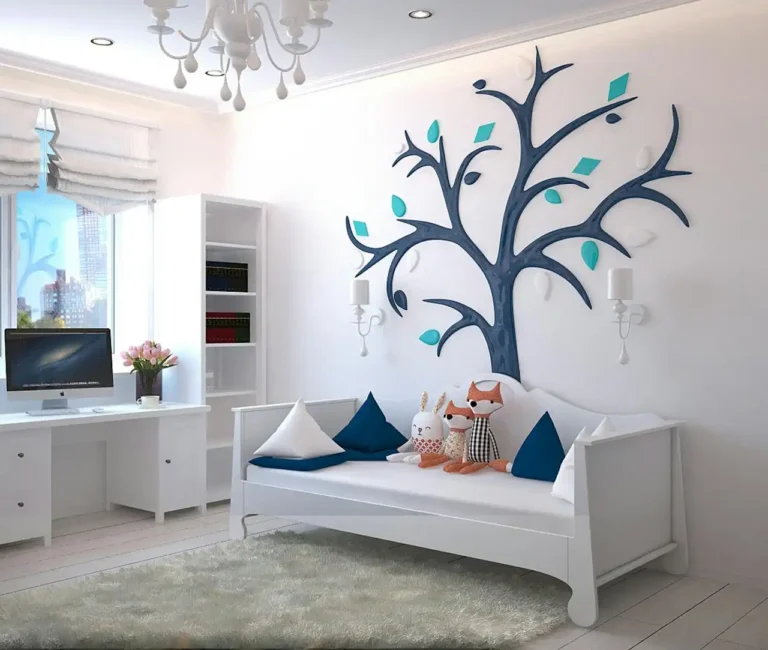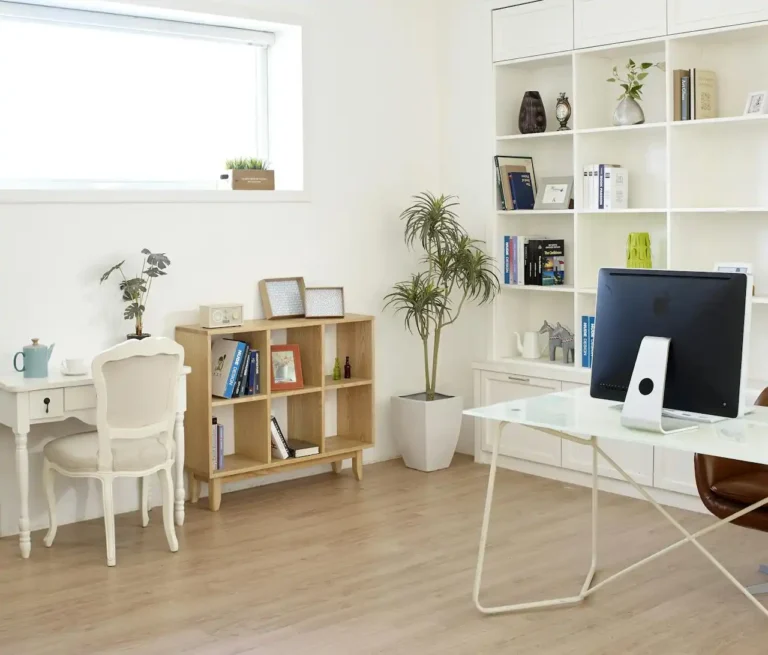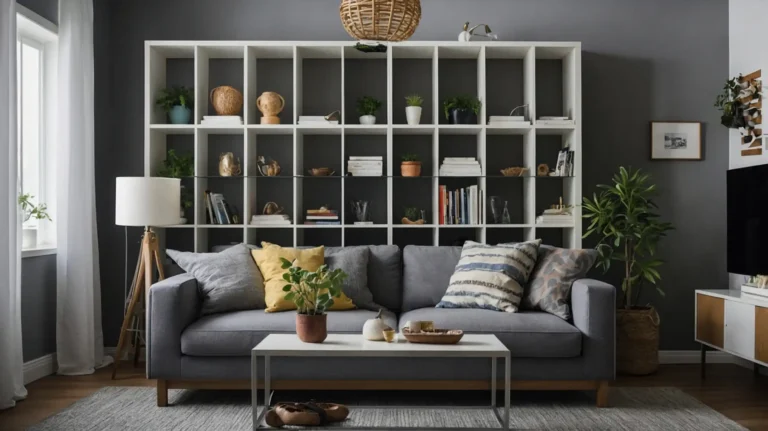The Rule of Three: A Simple Design Trick That Changes Everything
You’ve admired countless beautiful rooms but struggled to recreate that same polished look in your own home. The secret might be simpler than you think.
Professional designers rely on one fundamental principle that instantly elevates any space: the rule of three.
This simple concept transforms ordinary arrangements into visually stunning displays.
Master this single technique, and you’ll develop an eye for creating balanced, engaging spaces that feel both intentional and effortless.
What Is the Rule of Three?
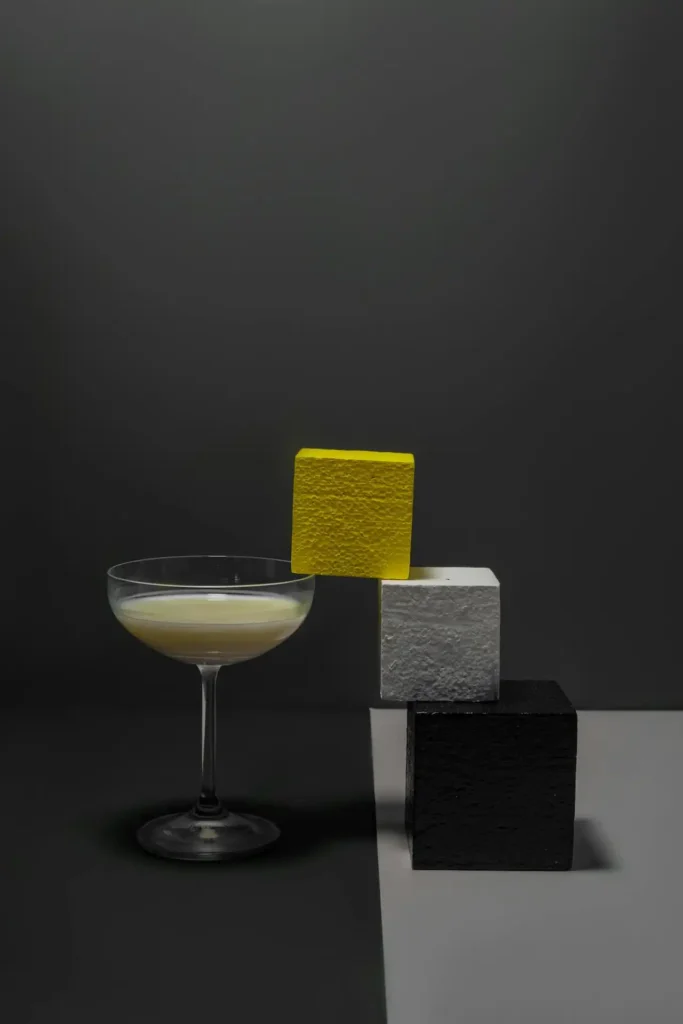
The rule of three states that objects arranged in odd numbers, particularly groups of three, create more appealing and memorable visual compositions than even-numbered arrangements.
This principle appears everywhere in successful design. Three picture frames on a mantle look more dynamic than two or four.
Three pillows on a sofa create better visual flow than a pair. Three candles of varying heights generate more interest than two identical ones.
The magic lies in how our brains process visual information. Even numbers create perfect symmetry, which can feel static and predictable.
Odd numbers introduce subtle asymmetry that keeps our eyes engaged and interested. Your mind naturally seeks patterns and completion.
When you see three objects, your brain creates an invisible triangle connecting them, forming a pleasing geometric relationship that feels stable yet dynamic.
The Psychology Behind Why Three Works
Understanding why the rule of three works helps you apply it more effectively throughout your home design projects.
Human brains find odd numbers more natural and organic. In nature, perfect symmetry rarely exists.
Flowers have odd numbers of petals, leaves grow in irregular patterns, and tree branches extend asymmetrically. Your subconscious recognizes these natural patterns as beautiful and harmonious.
Three represents the smallest number that creates a pattern while maintaining visual interest.
Two items can feel incomplete or like something’s missing. Four or more items often overwhelm the eye and dilute impact.
The triangle formation created by three objects provides psychological stability.
Triangles are the strongest geometric shape structurally, and your brain registers this stability as pleasing and secure.
This principle extends beyond interior design into art, literature, photography, and even marketing. The most memorable slogans often use three words or phrases.
Classic stories follow three-act structures. Professional photographers compose shots using the rule of thirds.
Applying the Rule of Three to Accessories
Start implementing the rule of three through your decorative accessories, where small changes create immediate visual improvements.
Group three items of varying heights on side tables, coffee tables, or shelves.
Choose objects with different textures, shapes, or colors while maintaining a cohesive theme.
A tall candlestick, medium-sized vase, and small decorative bowl create an appealing arrangement.
Vary the visual weight of your three objects. Combine heavy and light elements, dark and bright colors, or smooth and textured surfaces.
This variation adds depth and prevents your grouping from feeling monotonous. Position your three items to form a triangle rather than a straight line.
Place the tallest object slightly back, the medium item forward and to one side, and the smallest piece completing the triangle.
This arrangement guides the eye naturally through the composition. Overcrowding diminishes the impact of each individual element.
Remember that negative space matters as much as the objects themselves. Leave breathing room between pieces and around the entire grouping.
Creating Focal Points with Three Elements
Use the rule of three to establish strong focal points that anchor your room’s design and draw attention to key areas.
Above a sofa, arrange three pieces of artwork instead of one large piece or multiple small ones.
Vary the sizes slightly while maintaining consistent spacing between frames. This creates a gallery wall that feels intentional and sophisticated.
On mantlepieces, group three decorative objects of different heights and textures.
A tall vase, medium candle, and small sculpture create visual interest while maintaining the horizontal line of the mantle.
In bedrooms, place three elements on your dresser or nightstand. Stack two books, place a small plant on top, and add a picture frame nearby.
This arrangement adds personality without creating clutter. Kitchen counters benefit from three functional yet attractive items.
A wooden cutting board, ceramic canisters, and potted herb create an appealing vignette that serves daily needs while enhancing your kitchen’s aesthetics.
Using Three Colors for Cohesive Schemes
The rule of three applies powerfully to color selection, helping you create sophisticated palettes that feel balanced and intentional.
Choose three main colors for each room: a dominant neutral, a secondary supporting color, and an accent shade.
This limitation prevents color chaos while providing enough variety to maintain visual interest.
Your dominant color should cover approximately 60% of the room through walls, large furniture, or area rugs.
Select timeless neutrals like soft grays, warm whites, or gentle beiges that provide a calming foundation.
The secondary color occupies roughly 30% of the space through upholstery, window treatments, or significant accent pieces.
This color adds personality while supporting the overall scheme. This pop of color energizes the space without overwhelming it.
Reserve your accent color for approximately 10% of the room through pillows, artwork, or small decorative objects.
Stick to these three colors throughout the room, using different shades and tones of each for variety.
This approach creates cohesive, sophisticated color schemes that feel professionally designed.
Arranging Furniture in Groups of Three
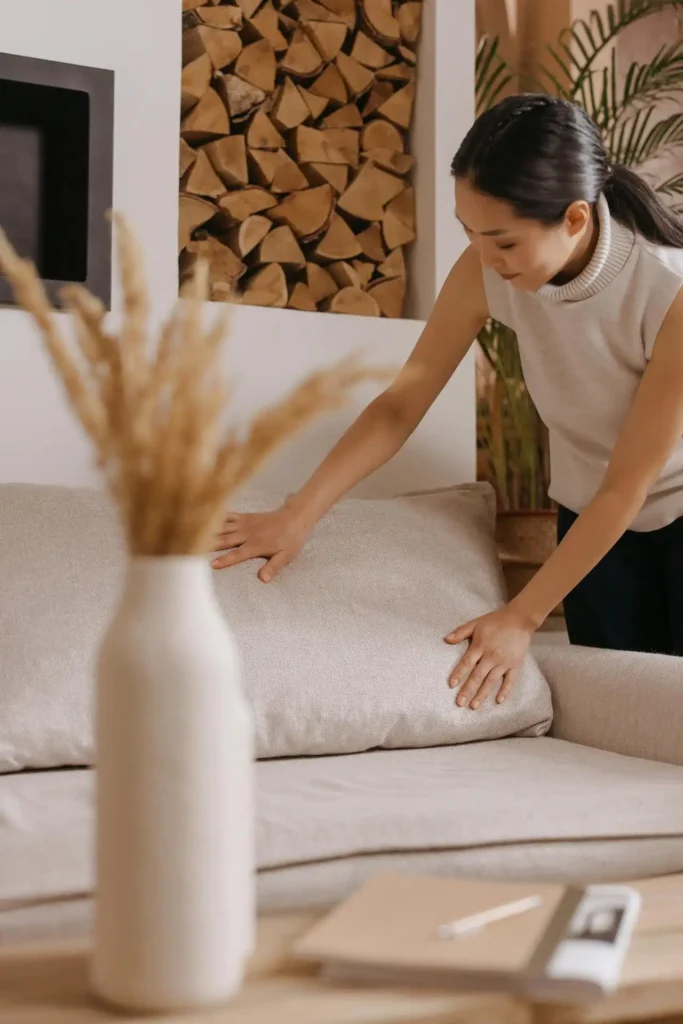
Apply the rule of three to furniture arrangements for more dynamic and functional room layouts that encourage interaction and flow.
Create conversation areas using three seating pieces instead of matching pairs. Combine a sofa with two different chairs rather than identical seating.
This arrangement feels more organic and accommodates different seating preferences. This combination adds depth and sophistication while maintaining comfort.
In dining areas, consider three pendant lights over islands or tables instead of two or four. This creates better light distribution while adding visual interest to the space above.
Group three different textures in your seating arrangements. Pair a smooth leather sofa with a woven fabric chair and a velvet ottoman.
Position three furniture pieces to form triangular conversation zones. Angle chairs slightly toward each other and the sofa to encourage interaction while maintaining easy traffic flow through the space.
Lighting Arrangements That Follow the Rule
Implement the rule of three in your lighting design to create layered, sophisticated illumination that enhances both function and ambiance.
Combine three types of lighting in each room: ambient, task, and accent lighting. Ambient lighting provides overall illumination through overhead fixtures.
Task lighting serves specific functions like reading or cooking. Accent lighting highlights artwork or architectural features.
Use three different light sources rather than relying on single overhead fixtures. Vary the heights of your light sources to create visual interest.
Combine table lamps, floor lamps, and ceiling lights to create flexible lighting options for different times of day and activities.
A tall floor lamp, medium table lamp, and low accent light create better light distribution while adding layers to your room’s design.
Consider three different bulb temperatures throughout your home. Warm light in bedrooms and living areas creates cozy atmospheres.
Neutral light in kitchens and bathrooms provides clear visibility. Cool light in work areas enhances focus and productivity.
Pattern Mixing with Three Elements
Use the rule of three to mix patterns successfully without creating visual chaos or overwhelming your space.
Select three different patterns that share at least one common color. A large floral print, medium stripe, and small geometric pattern can work beautifully together when connected by shared hues.
Vary the scale of your three patterns significantly. Combine large, medium, and small-scale designs rather than patterns of similar size. This prevents visual competition and creates hierarchy in your design.
Use your boldest pattern sparingly as the accent, your medium pattern as the secondary element, and your smallest pattern as the foundation. This approach creates balance while maintaining visual interest.
Limit yourself to these three patterns throughout the room. Adding more patterns dilutes impact and creates confusion. Three well-chosen patterns provide plenty of variety while maintaining cohesion.
Common Mistakes to Avoid
Understanding what doesn’t work helps you apply the rule of three more successfully in your own design projects.
Avoid making all three elements identical in size, color, or texture. Matching triplets feel rigid and unnatural.
Instead, embrace variation while maintaining a connecting element like color, material, or style.
Don’t arrange your three items in perfect straight lines. Linear arrangements feel static and boring. Create subtle triangular formations that guide the eye naturally through the composition.
Resist the urge to fill every surface with groups of three. Apply this rule selectively to key areas and focal points. Overusing any design principle diminishes its impact and creates visual fatigue.
Never force the rule when it doesn’t serve your space or function. Some situations call for pairs or single statement pieces. Use the rule of three as a guideline, not an absolute requirement.
Avoid grouping three items that compete for attention. While variation is important, your grouping should feel cohesive and intentional rather than random or chaotic.
Beyond Three: When to Break the Rule
While the rule of three provides an excellent foundation, successful designers know when to deviate from this principle for maximum impact.
Use single statement pieces when you want to create drama or focus attention on one spectacular object.
A large piece of artwork or stunning light fixture can anchor a room more effectively than a grouping.
Consider groups of five or seven for larger spaces or longer surfaces. Mantels, console tables, or kitchen islands might accommodate larger groupings while maintaining the odd-number principle.
Pair items when symmetry serves your design goals. Bedside tables, table lamps flanking a sofa, or matching chairs create formal balance that some spaces require.
Even numbers work well for functional items like dining chairs or bar stools where symmetry and balance matter more than visual interest.
Making the Rule Work in Small Spaces
Small spaces benefit tremendously from the rule of three, but application requires careful consideration of scale and proportion.
Choose smaller objects that won’t overwhelm limited surface area. Three small succulents work better than three large vases in compact spaces.
Use vertical arrangements to maximize impact without consuming floor space. Stack books, place a plant on top, and add a small decorative object to create height without width.
Apply the rule to wall arrangements where floor space is limited. Three small mirrors or pictures can create impact without requiring surface area.
Consider multi-functional groupings that serve practical needs while following design principles. A lamp, small plant, and catch-all dish provide function and beauty on a nightstand.
Seasonal Applications of the Rule
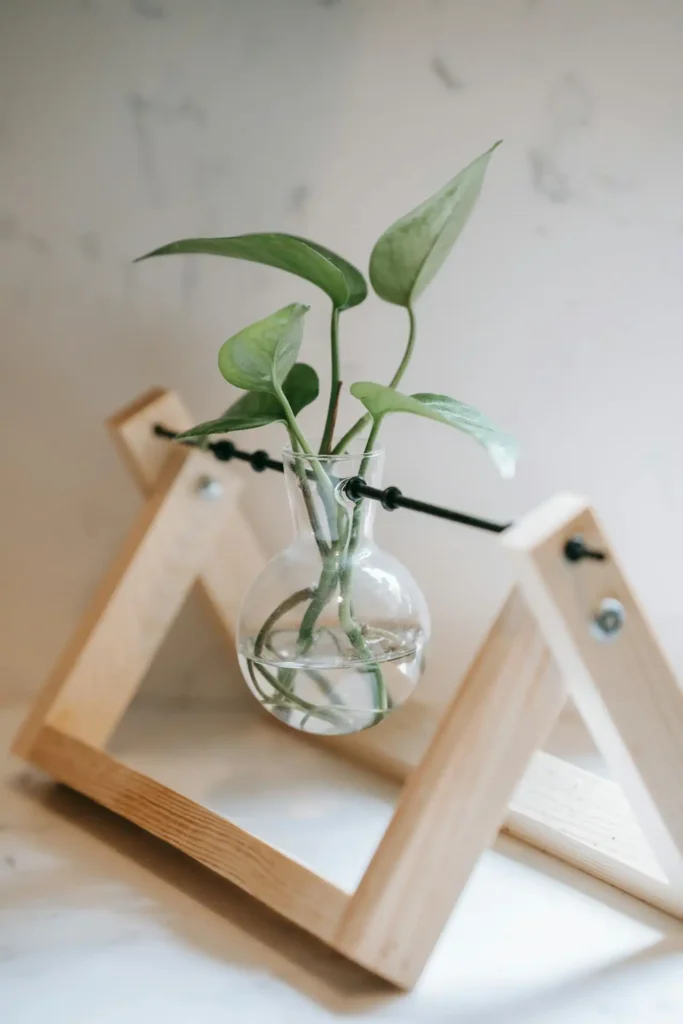
Use the rule of three to create seasonal displays that refresh your home throughout the year without major redesign efforts.
Spring arrangements might combine fresh flowers, pastel accessories, and light textiles. Summer groupings could feature coastal elements like shells, coral, and blue glass objects.
Fall displays work beautifully with natural elements like pumpkins, pinecones, and autumn leaves arranged in groups of three.
Winter arrangements using evergreen branches, metallic objects, and candles create cozy seasonal appeal.
Rotate seasonal accessories while maintaining your foundational design elements. This approach keeps your home feeling fresh and current while preserving your investment in quality permanent pieces.
Store off-season accessories in labeled containers so you can easily create new three-element groupings as seasons change.
Conclusion
The rule of three transforms ordinary spaces into professionally designed rooms through one simple principle that anyone can master.



